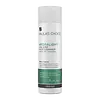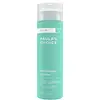What's inside
What's inside
 Key Ingredients
Key Ingredients

 Benefits
Benefits

 Concerns
Concerns

 Ingredients Side-by-side
Ingredients Side-by-side

Water
Skin ConditioningGlycerin
HumectantSodium Laureth Sulfate
CleansingSodium PCA
HumectantSodium Lactate
BufferingGlycine
BufferingFructose
HumectantUrea
BufferingNiacinamide
SmoothingInositol
HumectantLactic Acid
BufferingAllantoin
Skin ConditioningSodium Hyaluronate
HumectantPEG-7 Glyceryl Cocoate
EmulsifyingSodium Methyl Cocoyl Taurate
CleansingXanthan Gum
EmulsifyingTriethanolamine
BufferingCarbomer
Emulsion StabilisingBenzophenone-3
UV AbsorberSodium Hydroxymethylglycinate
PreservativePropylparaben
PreservativeMethylparaben
PreservativeSodium Benzoate
MaskingWater, Glycerin, Sodium Laureth Sulfate, Sodium PCA, Sodium Lactate, Glycine, Fructose, Urea, Niacinamide, Inositol, Lactic Acid, Allantoin, Sodium Hyaluronate, PEG-7 Glyceryl Cocoate, Sodium Methyl Cocoyl Taurate, Xanthan Gum, Triethanolamine, Carbomer, Benzophenone-3, Sodium Hydroxymethylglycinate, Propylparaben, Methylparaben, Sodium Benzoate
Water
Skin ConditioningSodium Cocoyl Glutamate
CleansingGlycerin
HumectantCaprylic/Capric Triglyceride
MaskingCocamidopropyl Betaine
CleansingSodium Laurylglucosides Hydroxypropylsulfonate
CleansingCellulose Gum
Emulsion StabilisingCoco-Caprylate/Caprate
EmollientHydroxyacetophenone
AntioxidantInulin
Skin ConditioningXanthan Gum
EmulsifyingEthylhexylglycerin
Skin ConditioningSodium Phytate
Cellulose
AbsorbentFructose
HumectantGlucose
HumectantPhenoxyethanol
PreservativeWater, Sodium Cocoyl Glutamate, Glycerin, Caprylic/Capric Triglyceride, Cocamidopropyl Betaine, Sodium Laurylglucosides Hydroxypropylsulfonate, Cellulose Gum, Coco-Caprylate/Caprate, Hydroxyacetophenone, Inulin, Xanthan Gum, Ethylhexylglycerin, Sodium Phytate, Cellulose, Fructose, Glucose, Phenoxyethanol
 Reviews
Reviews

Ingredients Explained
These ingredients are found in both products.
Ingredients higher up in an ingredient list are typically present in a larger amount.
Glycerin is already naturally found in your skin. It helps moisturize and protect your skin.
A study from 2016 found glycerin to be more effective as a humectant than AHAs and hyaluronic acid.
As a humectant, it helps the skin stay hydrated by pulling moisture to your skin. The low molecular weight of glycerin allows it to pull moisture into the deeper layers of your skin.
Hydrated skin improves your skin barrier; Your skin barrier helps protect against irritants and bacteria.
Glycerin has also been found to have antimicrobial and antiviral properties. Due to these properties, glycerin is often used in wound and burn treatments.
In cosmetics, glycerin is usually derived from plants such as soybean or palm. However, it can also be sourced from animals, such as tallow or animal fat.
This ingredient is organic, colorless, odorless, and non-toxic.
Glycerin is the name for this ingredient in American English. British English uses Glycerol/Glycerine.
Learn more about GlycerinWater. It's the most common cosmetic ingredient of all. You'll usually see it at the top of ingredient lists, meaning that it makes up the largest part of the product.
So why is it so popular? Water most often acts as a solvent - this means that it helps dissolve other ingredients into the formulation.
You'll also recognize water as that liquid we all need to stay alive. If you see this, drink a glass of water. Stay hydrated!
Learn more about WaterXanthan gum is used as a stabilizer and thickener within cosmetic products. It helps give products a sticky, thick feeling - preventing them from being too runny.
On the technical side of things, xanthan gum is a polysaccharide - a combination consisting of multiple sugar molecules bonded together.
Xanthan gum is a pretty common and great ingredient. It is a natural, non-toxic, non-irritating ingredient that is also commonly used in food products.
Learn more about Xanthan Gum